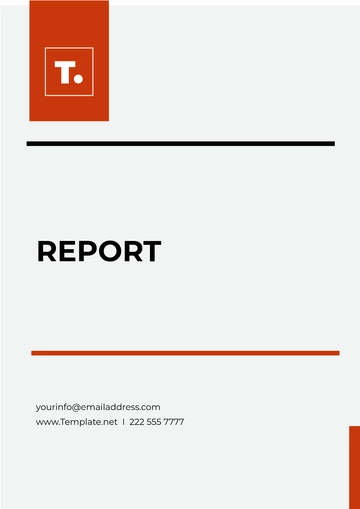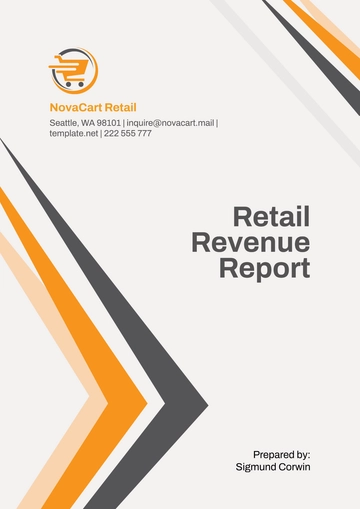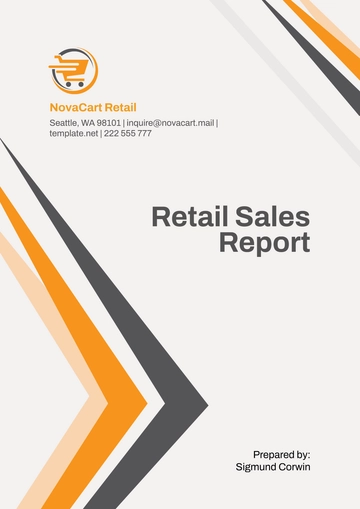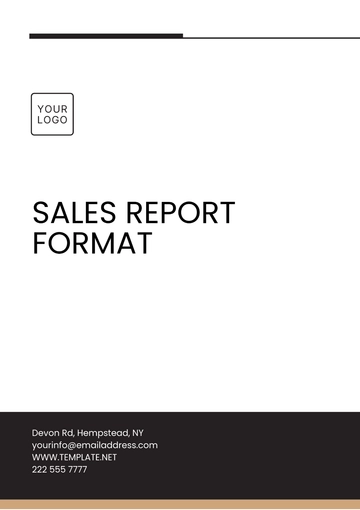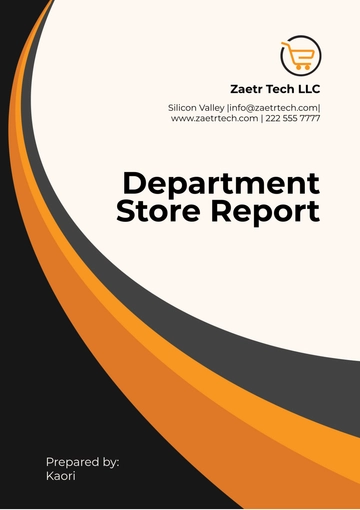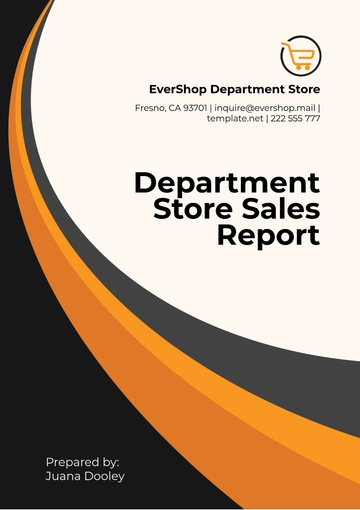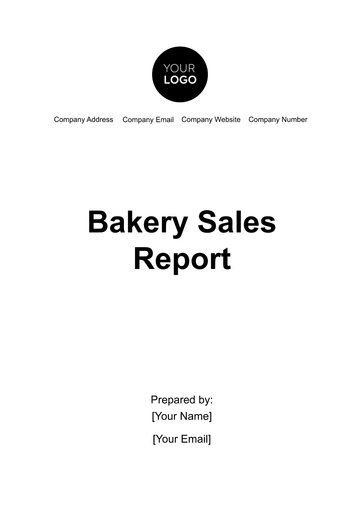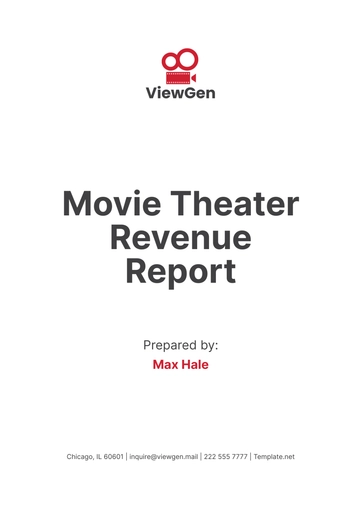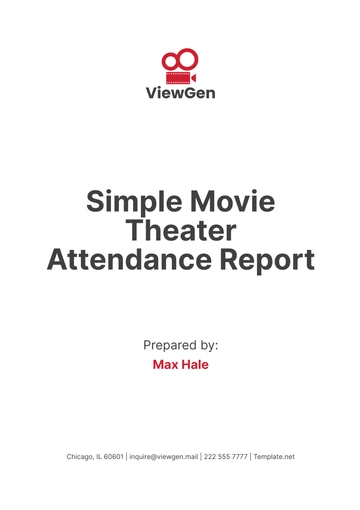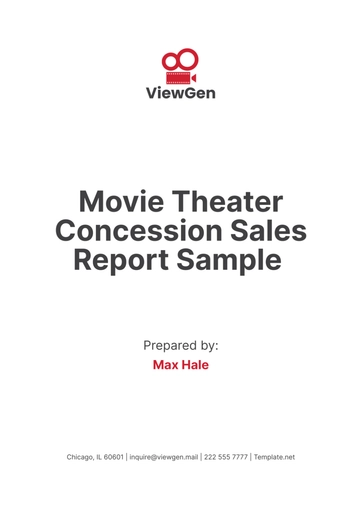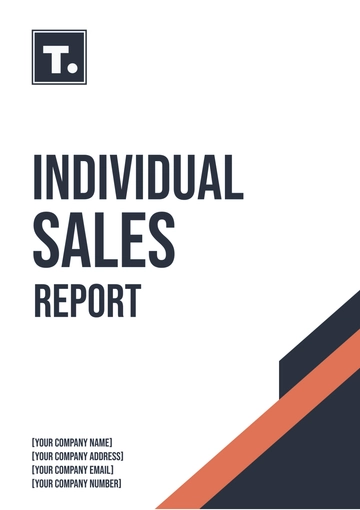Free Sales Document on Reporting Etiquettes

I. Introduction
A. Overview
The Importance of Reporting Etiquettes
In the modern business landscape, effective communication through reports is essential for conveying information, making informed decisions, and building professional relationships. Reporting etiquettes play a crucial role in ensuring that communication is clear, concise, and respectful. They encompass various aspects of report writing, including language, formatting, accuracy, and relevance.
By adhering to proper reporting etiquettes, organizations can enhance the quality and credibility of their reports. Clear and professional communication fosters trust and confidence among stakeholders, leading to better decision-making and improved organizational performance.
B. Purpose
The purpose of this document is to outline the best practices and guidelines for maintaining proper reporting etiquettes within [Your Company Name]. By adhering to these standards, we aim to enhance the quality and professionalism of our reports, thereby improving communication with stakeholders and supporting informed decision-making.
This document serves as a reference guide for employees involved in report writing, including analysts, managers, and executives. It provides practical advice and recommendations to ensure that reports produced by [Your Company Name] adhere to high standards of clarity, accuracy, and relevance.
Furthermore, this document underscores the importance of reporting etiquettes in fostering positive relationships with clients, partners, and other stakeholders. By following these guidelines, [Your Company Name] demonstrates its commitment to excellence in communication and professionalism.
II. Importance of Reporting Etiquettes
A. Professionalism in Communication
Clarity and Conciseness
Reports serve as a medium for conveying complex information to various stakeholders within and outside the organization. Clarity and conciseness in communication are paramount to ensure that the intended message is effectively delivered and easily comprehensible to the target audience. A well-written report avoids ambiguity and provides clear, straightforward explanations of key points, findings, and recommendations.
1.1. Tone and Language
The tone and language used in reports should be professional, respectful, and appropriate for the intended audience. Maintaining a professional tone fosters credibility and establishes a positive impression of the author and the organization. It is essential to use language that is inclusive, avoids bias or discriminatory language, and respects cultural sensitivities.
1.2. Formatting Consistency
Consistent formatting enhances the readability and visual appeal of reports, contributing to a professional presentation. Adhering to a standardized format ensures that information is organized logically and can be easily navigated by readers. Consistency in formatting also reflects attention to detail and a commitment to quality in report preparation.
B. Building Credibility
Accuracy and Precision
Reports are relied upon to provide accurate and reliable information that stakeholders can trust when making decisions. Accuracy involves ensuring that data and information presented in reports are correct and free from errors or inaccuracies. Precision refers to the level of detail and specificity in reporting, avoiding vague or ambiguous statements that may lead to misinterpretation.
1.1. Data Integrity
Maintaining the integrity of data is crucial to uphold the credibility of reports. This includes ensuring that data sources are reputable and reliable, and that data collection methods are rigorous and transparent. Proper documentation and citation of sources allow readers to verify the accuracy and validity of the information presented.
1.2. Proper Sourcing and Citation
Properly citing sources not only acknowledges the contributions of others but also enhances the credibility and transparency of reports. Clear and accurate referencing of sources enables readers to trace the origin of information and assess its reliability. Ethical sourcing and citation practices demonstrate respect for intellectual property rights and academic integrity.
C. Effective Decision-Making Support
Relevance and Timeliness
Reports should provide timely and relevant information that supports decision-making processes and addresses the needs of stakeholders. Timeliness ensures that reports are actionable and responsive to current circumstances or emerging issues. Relevance involves focusing on information that is pertinent to the objectives and interests of the intended audience.
1.1. Audience-Centric Approach
Understanding the characteristics, preferences, and information needs of the target audience is essential for effective communication. Reports should be tailored to the audience's level of expertise, interests, and decision-making roles. An audience-centric approach ensures that reports are meaningful and engaging to readers, leading to greater receptivity and impact.
1.2. Actionable Insights
The ultimate purpose of reports is to provide insights and recommendations that enable stakeholders to make informed decisions and take appropriate actions. Reports should not only present data but also interpret findings, draw conclusions, and propose actionable recommendations based on analysis. Actionable insights empower stakeholders to address challenges, capitalize on opportunities, and achieve organizational objectives effectively.
III. Reporting Etiquettes Best Practices
A. Structure and Organization
Title Page
The title page should include the title of the report, author's name, date of submission, and any other relevant information such as the company name or logo.
1.1. Table of Contents
A table of contents provides an overview of the report's structure and helps readers navigate through its sections and subsections easily.
1.2. Executive Summary
The executive summary summarizes the key findings, conclusions, and recommendations of the report in a concise manner. It provides busy stakeholders with a quick overview of the report's content and main takeaways.
B. Clear and Informative Content
Introduction
The introduction sets the context for the report, outlining its purpose, scope, and objectives. It provides background information and defines any key terms or concepts to orient the reader.
1.1. Methodology
The methodology section describes the approach used to collect data, conduct analysis, and generate insights. It should include details about research methods, data sources, sample size, and any limitations or assumptions.
1.2. Results and Analysis
The results and analysis section presents the findings of the research or investigation in a clear and structured manner. Data should be presented in tables, charts, or graphs where appropriate, and accompanied by insightful analysis and interpretation.
1.3. Recommendations
Based on the analysis, recommendations should be provided to guide decision-making and action. Recommendations should be specific, actionable, and supported by evidence from the report's findings.
C. Visual Presentation
Charts and Graphs
Charts and graphs are effective tools for visualizing data and trends, making complex information easier to understand. They should be clearly labeled and referenced in the text.
1.1. Tables
Tables are used to present detailed numerical data in an organized format. Tables should be clearly formatted with column headers and footnotes as necessary.
1.2. Infographics
Infographics are graphical representations of information, such as flowcharts, diagrams, or timelines. They can be used to convey complex concepts or processes in a visually engaging manner.
D. Language and Style
Plain Language
Reports should be written in plain language that is easy to understand for the intended audience. Technical terms should be explained, and complex ideas should be communicated clearly.
1.1. Avoidance of Jargon
Avoid using unnecessary jargon or industry-specific terminology that may confuse or alienate readers. Use language that is accessible to a wide audience while still maintaining accuracy and precision.
1.2. Proper Grammar and Spelling
Good grammar and spelling are essential for effective communication. Reports should be proofread carefully to ensure that they are free from errors and typos that could detract from their professionalism.
IV. Implementing Reporting Etiquettes in [Your Company Name]
A. Training and Education
Workshops and Seminars
[Your Company Name] will conduct workshops and seminars to train employees on proper reporting etiquettes. These training sessions will cover topics such as writing skills, data analysis, and visual presentation techniques.
1.1. Resource Materials
[Your Company Name] will provide employees with resource materials, such as style guides and templates, to assist them in adhering to reporting etiquettes. These materials will serve as reference tools for employees as they prepare reports.
B. Templates and Guidelines
Reporting Templates
[Your Company Name] will develop standardized reporting templates to ensure consistency and professionalism across all reports. These templates will include predefined sections and formatting guidelines to streamline the report writing process.
1.1. Style Guide
[Your Company Name] will create a style guide outlining preferred language, formatting conventions, and other writing standards for reports. This guide will help maintain a cohesive and professional writing style across all communications.
C. Continuous Improvement
Feedback Mechanisms
[Your Company Name] will implement feedback mechanisms to gather input from stakeholders on the quality of reports. Feedback will be used to identify areas for improvement and make adjustments to reporting practices as needed.
1.1. Performance Metrics
[Your Company Name] will establish performance metrics to measure the effectiveness of reporting practices. Metrics may include report completion times, reader satisfaction ratings, and adherence to reporting guidelines.
V. Implementing Reporting Etiquettes in [Your Company Name]
A. Training and Education
Workshops and Seminars
[Your Company Name] will conduct regular workshops and seminars focused on enhancing employees' skills in report writing and communication. These sessions will be led by experienced professionals and will cover various topics such as structuring reports, data analysis techniques, and effective presentation skills.
1.1. Resource Materials
In addition to workshops and seminars, [Your Company Name] will provide employees with access to comprehensive resource materials. These materials may include online courses, articles, and reference guides covering best practices in reporting etiquettes. Employees can use these resources to deepen their understanding and improve their report writing skills at their own pace.
B. Templates and Guidelines
Reporting Templates
[Your Company Name] will develop standardized reporting templates to streamline the report writing process and ensure consistency across different departments and projects. These templates will include predefined sections such as introduction, methodology, results, and recommendations, along with formatting guidelines for text, tables, and figures.
1.1. Style Guide
To maintain a cohesive and professional writing style across all reports, [Your Company Name] will establish a style guide. This guide will outline preferred language, tone, and formatting conventions for reports, ensuring that all communications adhere to the company's brand identity and standards.
C. Continuous Improvement
Feedback Mechanisms
[Your Company Name] will implement feedback mechanisms to gather input from stakeholders on the quality and effectiveness of reports. This feedback may be collected through surveys, focus groups, or one-on-one meetings with key stakeholders. The insights gathered will be used to identify areas for improvement and inform future training initiatives.
1.1. Performance Metrics
To measure the impact of training efforts and the overall effectiveness of reporting practices, [Your Company Name] will establish key performance metrics. These metrics may include report completion times, accuracy of data, stakeholder satisfaction ratings, and adherence to reporting guidelines. Regular performance reviews will be conducted to track progress and identify opportunities for optimization.
VI. Resources and Support
A. Access to Tools and Software
[Your Company Name] will provide employees with access to advanced tools and software to facilitate the report writing process. This may include data analysis software, report generation tools, and visualization platforms. By equipping employees with the right tools, we aim to streamline the reporting process and enhance productivity.
B. Expert Support and Consultation
Employees will have access to expert support and consultation from the [Your Company Name] team. Whether they need assistance with data analysis, report structuring, or presentation design, our experts will be available to provide guidance and advice. This personalized support ensures that employees have the resources they need to produce high-quality reports.
VII. Quality Assurance
A. Peer Review Process
Before finalizing a report, employees will undergo a peer review process where their work will be reviewed by colleagues or supervisors. This review process ensures that reports meet the highest standards of quality and accuracy. Feedback from peers helps identify areas for improvement and ensures that reports are well-rounded and comprehensive.
B. Quality Control Checks
[Your Company Name] will implement quality control checks to ensure that reports adhere to established guidelines and standards. This may include checks for formatting consistency, data accuracy, and adherence to style guide principles. By conducting thorough quality control checks, we can ensure that all reports meet the expected level of quality before being shared with stakeholders.
VIII. Conclusion
A. Recap of Key Points
Effective reporting etiquettes are essential for ensuring clear communication, building credibility, and supporting informed decision-making within [Your Company Name]. By implementing the strategies outlined in this document, employees can enhance the quality and professionalism of their reports, ultimately driving better outcomes for the organization.
B. Commitment to Excellence
[Your Company Name] is committed to fostering a culture of excellence in report writing and communication. Through ongoing training, resources, and feedback mechanisms, we will continue to refine our reporting practices and uphold the highest standards of professionalism and integrity in all our communications.
- 100% Customizable, free editor
- Access 1 Million+ Templates, photo’s & graphics
- Download or share as a template
- Click and replace photos, graphics, text, backgrounds
- Resize, crop, AI write & more
- Access advanced editor
Enhance professionalism in sales reporting with our Sales Document on Reporting Etiquettes Template from Template.net. This editable and customizable template offers guidelines for effective and polished reporting practices. Ensure consistency and clarity in your sales reports while maintaining a professional tone. Edit effortlessly with our Ai Editor Tool for seamless customization.
You may also like
- Sales Report
- Daily Report
- Project Report
- Business Report
- Weekly Report
- Incident Report
- Annual Report
- Report Layout
- Report Design
- Progress Report
- Marketing Report
- Company Report
- Monthly Report
- Audit Report
- Status Report
- School Report
- Reports Hr
- Management Report
- Project Status Report
- Handover Report
- Health And Safety Report
- Restaurant Report
- Construction Report
- Research Report
- Evaluation Report
- Investigation Report
- Employee Report
- Advertising Report
- Weekly Status Report
- Project Management Report
- Finance Report
- Service Report
- Technical Report
- Meeting Report
- Quarterly Report
- Inspection Report
- Medical Report
- Test Report
- Summary Report
- Inventory Report
- Valuation Report
- Operations Report
- Payroll Report
- Training Report
- Job Report
- Case Report
- Performance Report
- Board Report
- Internal Audit Report
- Student Report
- Monthly Management Report
- Small Business Report
- Accident Report
- Call Center Report
- Activity Report
- IT and Software Report
- Internship Report
- Visit Report
- Product Report
- Book Report
- Property Report
- Recruitment Report
- University Report
- Event Report
- SEO Report
- Conference Report
- Narrative Report
- Nursing Home Report
- Preschool Report
- Call Report
- Customer Report
- Employee Incident Report
- Accomplishment Report
- Social Media Report
- Work From Home Report
- Security Report
- Damage Report
- Quality Report
- Internal Report
- Nurse Report
- Real Estate Report
- Hotel Report
- Equipment Report
- Credit Report
- Field Report
- Non Profit Report
- Maintenance Report
- News Report
- Survey Report
- Executive Report
- Law Firm Report
- Advertising Agency Report
- Interior Design Report
- Travel Agency Report
- Stock Report
- Salon Report
- Bug Report
- Workplace Report
- Action Report
- Investor Report
- Cleaning Services Report
- Consulting Report
- Freelancer Report
- Site Visit Report
- Trip Report
- Classroom Observation Report
- Vehicle Report
- Final Report
- Software Report
